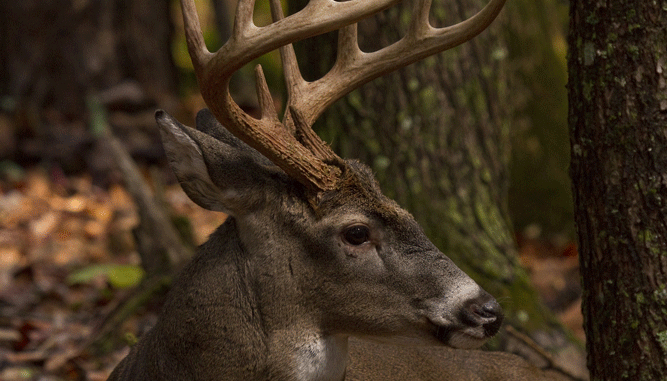
Change your tactics as the end of deer season approaches, and your chances of tagging a trophy will increase.
By the first of December and the last month of the Palmetto State’s deer season, crisping leaves and frost-covered fields become common visions just after daybreak. But sightings of trophy bucks trampling across wide-open places chasing mates should not be expected with any confidence. Even though some rutting activity will continue, careless behavior is over, but the remaining days of the season can prove successful for the hunter willing to alter his strategy.
For more than three months, hunters have scoured the wilderness trying to extract trophy bucks from the usual places: woods roads, agriculture fields, powerline right-of-ways and new cutovers. Any mature buck still roaming has again, earned another stripe and lived through another period of weakness brought on by Mother Nature and the opposite sex.
It’s a fact that most mature bucks land on the skinning rack between Opening Day and Thanksgiving. At the start of the season, hunters catch mature animals in their summer pattern with their guards down. As the rut cranks up, bucks get careless, and many get picked off tailing hot does. By Thanksgiving, most does have experienced an active estrus cycle and been bred. But with mating opportunities dwindling rapidly, mature bucks regain their senses and become super-sensitive to unnatural smells and disturbance.
Kevin Davis of Blacks Camp in Cross (843-753-2231) believes mature bucks become refugees and will slide into the protection of heavy cover far from the beaten paths of the fair-weather hunter.
“After the rut is over, if you want any action with a mature animals, you must get back deep in the woods where the deer are less pressured,” he said.
Not only does the breeding season expose bucks to immediate danger, the 10 to 12 weeks of non-stop doe-chasing takes its toll on mature bucks, depleting more than 10 percent of their body mass. As the breeding season subsides and cold weather arrives, bucks will concentrate in heavy cover close to rich food sources. The best and most-abundant food sources will concentrate deer, but they must be secluded and unpressured to offer hunters a chance to encounter a mature buck during daylight hours.
Davis plants small, cool-season food plots in remote areas to attract bucks for late-season hunts.
“We plant isolated patches of fast-growing soybeans and oats in backwoods areas. The soybeans will get hit hard first, but the oats will be left alone until the late season when many other foods are unavailable,” Davis said. “The oats will bring them in heavy when many natural foods in the area are depleted.”
Food plots provide deer with exceptional late-season nutrition, especially when brassicas, oats and clover are available. These resilient crops offer a perfect mix of protein, carbohydrates and fat to recharge a buck’s systems for the approaching winter. Crops should be selected that are resilient to heavy browsing or have a delayed maturation.
Secluded plots deep in heavy cover can be real hotspots giving hunters the opportunity to encounter a trophy animal. These plots should be set aside specifically for late-season hunts, and access should be restricted early on to create a sanctuary for the deer. Deer from surrounding properties will hone in on these productive plots looking for refuge and sustenance. A prime late-season food source can also be a secluded agriculture field, as long as human disturbance has been kept to a minimum.
Terry Hiers of Blackwater Hunting Services in Ulmer (803-671-4868) pays close attention to heavily-used food sources in the late season, but he will not necessarily hunt the food sources directly.
“Our trail cameras show mature bucks feeding on our food plots, agriculture fields and corn piles regularly during the late season — almost exclusively at night. Hunting over these trampled food sources covered in human scent is just a waste of time. But that is okay,” he said.
Heirs will stop hunting over these major food sources and will shift his efforts to the travel corridors between the groceries and the main bedding area.
“Bucks can be caught heading back to bedding areas from their preferred feeding areas. We hunt on these secluded trails deep within the woods, but are very careful when doing so,” he said.
By December, mature bucks are well educated and will avoid dangerous situations, staying within the protection of heavy cover for most of the day. As long as pressure remains low, mature bucks will travel along the same paths between their bedding and feeding areas. But all hunters should be cautioned during this time.
“Mature bucks will just not put up with human scent,” said Heirs, who will set up his late-season stands, cutting limbs and cleaning out shooting lanes, before the season even starts. He will only hunt these late-season stands under ideal conditions with the preferred wind.
While scent control is always important, mature bucks have fought with continued pressure and blankets of human scent around every corner for more than three months. Mature bucks learn to detect the dangerous odors of humans, but many farms get pressured hard, and human scent will be scattered across every flat and bottomland. Before traveling down a trail or entering a major food source, mature bucks will check out the area downwind and will smell for any danger lurking in their paths. In fact, food is very important for deer in December, and they will become creative in finding ideal situations to visit rich food sources when hunters are away. Mature bucks avoid disastrous encounters with humans from being clever and learning to pattern their pursuers. Heirs will alter his hunting times to try to catch a deer changing their routine.
“Break the cycle and hunt different times of the day,” he said. “Mature bucks will pattern hunters and will sometimes visit secluded food patches in the middle of the day when hunters are gone.”
Heirs also targets oak groves in the late season.
“Our mature bucks are apt to feed in the daylight hours on secluded oak flats rich with acorns,” he said.
Oak-dominated forests offer deer with a secure food source rich in protein and carbohydrates within the cover of the forested landscape. While some acorns will be depleted by December in a deficient year, most oak flats will supply enough acorns for the remainder of the season. While deer will eat acorns from the red oak family at will, they prefer the plump acorns from white oaks and swamp chestnut oaks. Locating a secluded swamp chestnut oak flat in the late season can offer a hunter a final hurrah, with a chance at a bruiser in the late season.
Deer will also be really concentrated and will be found in a few choice areas late in the season. At the beginning of the season, food is abundant everywhere, and deer are relatively undisturbed. Deer have been run out of many of their earlier-season places and back into heavy cover, but they will still be in search of the best food source available. In essence, mature bucks will be roaming in smaller, but more-predicable places.
December loses a large percentage of the deer hunters from poor results within their normal routine on their same stands they have hunted for the past few months. A change in technique, tactics, and hunting locale can reward hunters with a final bruiser buck to close out the season. Scent control and the element of surprise will outsmart any mature buck roaming the boundaries even during the last few weeks of the year.
Island hoppers
As the season progresses, deer living near roads and main trails accessible by vehicles receive major hunting pressure. By December, deer move deeper into heavy cover and even islands on some of the state’s major reservoirs to evade the common hunter and find refuge.
South Carolina deer hunters, who number better than 140,000 statewide, have the longest season in the country. According to Charles Ruth, deer-project supervisor for the S.C. Department of Natural Resources, hunters put in more than two million days of effort during the 2010 season; they harvest about one-third of the state’s deer population annually. Deer get pressured heavily through the long season and are pushed further and further into places out-of-reach for the common hunter.
Guide Kevin Davis of Black’s Camp finds huge bucks holding up on the small islands scattered throughout the Wildlife Management Areas around the Santee Cooper lakes.
“In addition to the deer we see, the islands are loaded with massive rubs and large tracks,” he said.
Mature bucks learn that very few hunters visit the islands, and they get acclimated to the occasional passing angler. These bucks will hold up on these island completely surrounded by the protection of the lakes waters keeping the typical deer hunter away.
While may harbor mature bucks in the late season, Davis prefers those between 10 and 40 acres in size. He recommends checking out Russellville Island, The Hatchery, and Sandy Beach on Lake Moultrie and 16 Island, Church Island, Bass Island, and Pine Island on Lake Marion. Before hunting any of these islands, hunters should check specific regulations for each WMA.
Deer will naturally travel to water when danger is near, and they will hop from island to island. Some of the islands are actually peninsulas connected by narrow spits of land. Additionally, many of the WMA areas along the lakes’ shoreline have fingers of the lake where creeks enter. Deer will travel these bottlenecks, moving between the islands and peninsula areas, offering a prime opportunity to encounter and ambush a bruiser buck seeking asylum with a lakefront vistas.
Late-season hunts ideal for archers
For many archers, the bow makes its way to the deer stand for a few weeks in the 90-degree heat of the early season. Very few archers are left toting their gear in and out of the tree stand after Thanksgiving, but preferred late-season stand locations are ideal, with most opportunities existing well within bow range.
The long-distance views and vistas of the rut and early season are just not the places to encounter a mature buck later on. The ideal late-season setup will be in tight quarters, hunting along hidden trails and secluded food plots. Mature bucks will be traveling to these protected food sources from their secure bedding areas far from the reach of the average hunter. Any trails leading to and from these bedding areas should be watched closely from above.
Despite the heavy hunting pressure, deer will be driven to feed. They will travel great distances from adjoining properties to take advantage of a prime food source in a protected area.
Generally, most properties have their known remote areas where mature bucks will flee during the late season. Experienced hunters with a knowledge of their hunting grounds should understand where bucks will head late in the season.
Bowhunters have an added responsibility to choose their late-season stand locations before the season every starts. All cuttings and clippings necessary to allow an arrow to fly true from elevated stands should be conducted during the summer before the season opens.
If placed in the right location — along a heavy travel route or within a secluded food source — the bowhunter can have some of the best action of the year without having to negotiate with buzzing mosquitoes.
Hunt hard during extreme weather
Even though December is just the beginning of the winter season, the Palmetto State can turn into a winter wonderland overnight under the right weather pattern. With the rut trailing off and food resources diminishing fast, a period of harsh temperatures and snow cover will route deer to the best food sources available in a rush.
Cold weather signals a survival instinct among deer, and bucks are among the most vulnerable and susceptible to the rush for food. Bucks are coming off the exhaustive breeding season and need to eat several times per day to regain the lost energy.
Hunting pressure takes its toll on deer during the season, and mature bucks will evade dangerous areas with little reservations and retreat to the protection of heavy cover. However, harsh weather will loosen up their inhibitions and trigger a more instinctive approach to their daily routines. Out of instinct, deer will begin to feed heavily during cold snaps and sometimes throughout the day and night.
As cold fronts and periods of extreme weather blanket the landscape, hunters should put in overtime in the deer stand. Deer will feed throughout the night and day to take in as much energy as possible. Rich and stable food sources, as well as trails leading to and from these areas are prime places to set up and encounter a bruiser buck looking for groceries.

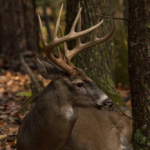
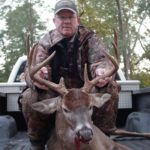
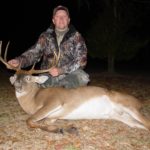
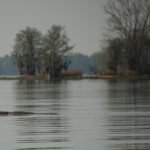
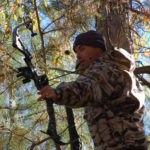
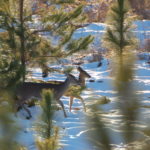



Be the first to comment